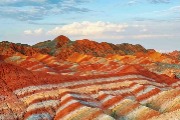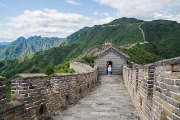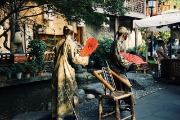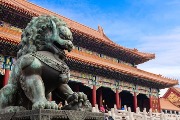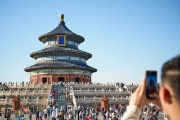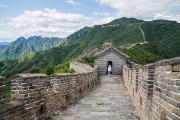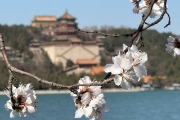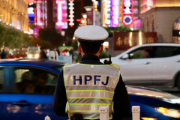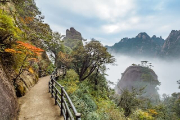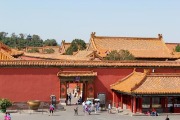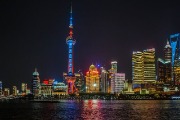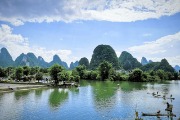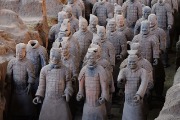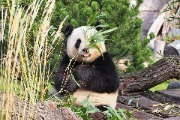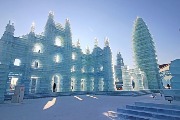Temple of Heaven
The ancient Chinese emperors prayed to the heaven here.
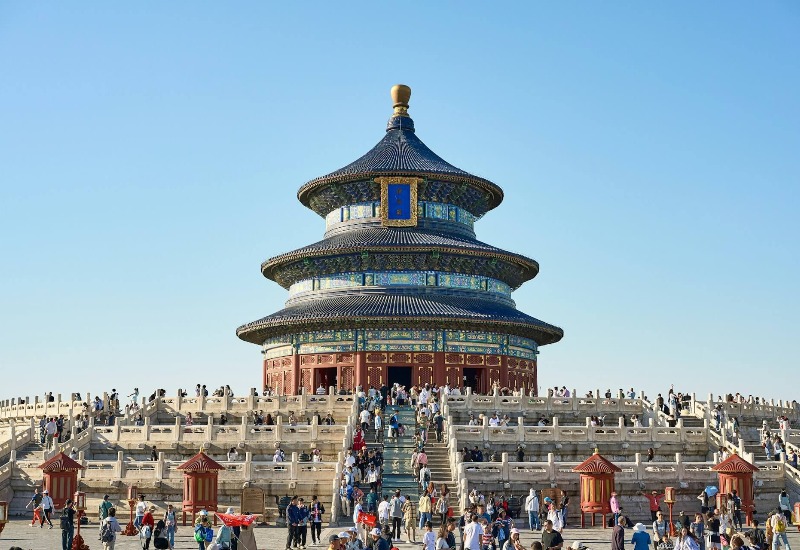
We’ll tell you what the Beijing Temple of Heaven is all about and why it’s so important to Chinese culture. From why it’s worth visiting, to the stories behind the different spots inside, we’ll show you that the Temple of Heaven isn’t just a beautiful building – it’s deeply tied to China’s traditional beliefs. At the end, we’ve got some FAQs and ticket info for you too.
Table of Contents
Why the Temple of Heaven is Worth Visiting
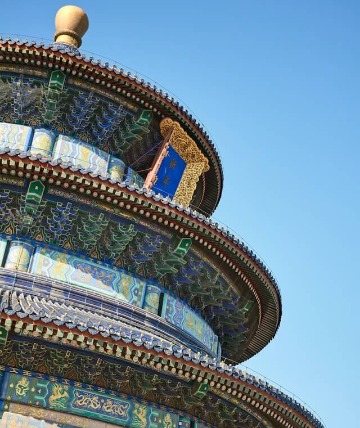
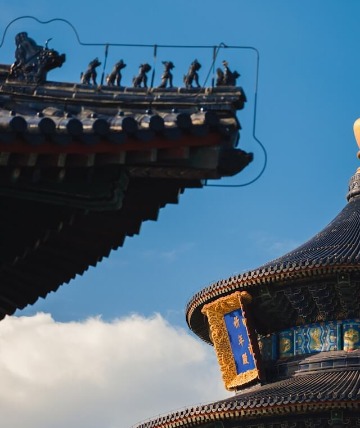
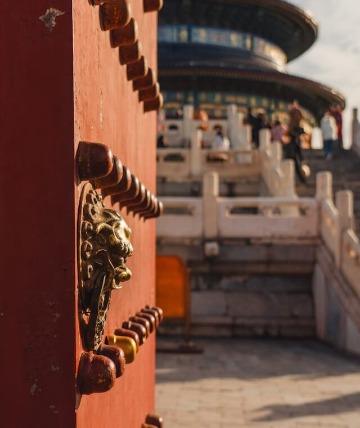
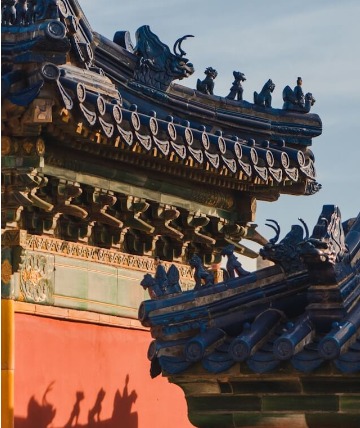
1. It’s the largest altar in China, showcasing the ancient Chinese belief system: Heaven and Immortals.
The Beijing Temple of Heaven was used during the Ming (1368-1644) and Qing (1644-1911) Dynasties, where the emperor prayed for good weather and abundant harvests on behalf of the entire nation. China has always been an agricultural country, with about 90% of the population being farmers in ancient times. So, whether the crops thrived or failed was crucial to the stability of the government.
In ancient China, the most widespread belief was in immortals, which first appeared during the Spring and Autumn Period (770–476 BC) and were later developed by Taoism. The immortals were many and varied, so it’s hard to explain them all here. But to give you a rough idea, the belief was that there was a “royal court” and “government” in the heavens as well. The immortals in this heavenly government were responsible for natural phenomena on Earth, and the “Heavenly Emperor” was their highest leader. The rituals at the Temple of Heaven Beijing were meant to honor these immortals and ask for their blessings.
Some Chinese people don’t just believe in the immortals of this heavenly government—they also worship their ancestors and famous historical figures as immortals. They believe that those who have passed away exist in another world and may have supernatural powers.
2. Understanding the Emperor's Position in the Hearts of the People from a Religious Perspective
When the emperor prayed at the Temple of Heaven, it wasn’t just because he was the highest ruler of the country—it was also because, in the eyes of the people, he was the “Son of Heaven.” In ancient China, emperors needed to make the people believe they were not only the holders of worldly power but also had a special, divine status. They linked themselves to the immortals and the heavens.
That’s why people often referred to the emperor as the “Son of Heaven” (“天子” in Chinese). “天” means “Heaven,” and “子” means “son.” The idea was that only the emperor had the divine right to communicate with Heaven; common people couldn’t. This belief highlighted that the emperor was the one and only person with this sacred connection to the heavens, and the people needed him as their link to the divine.
3. Former U.S. Secretary of State Henry Kissinger Visited the Temple of Heaven 15 Times
For many Chinese people, Henry Kissinger is one of the most famous Americans. Whenever there’s news about him on Chinese TV, he’s often called “an old friend of the Chinese people.” Over the years, he visited China more than 100 times, and made it to the Temple of Heaven Beijing 15 times. His first visit was when he was 48, and even at 85, he came back with his family to explore it again. He was particularly fond of the ancient trees there.
During one of his visits, he famously said, “The U.S. could replicate the architecture of the Temple of Heaven, but with less than 200 years of history, how could we ever replicate a 600-year-old tree?” He also left a note that read: “A country with such a great past will leave an even greater future!”
Main Attractions of the Temple of Heaven
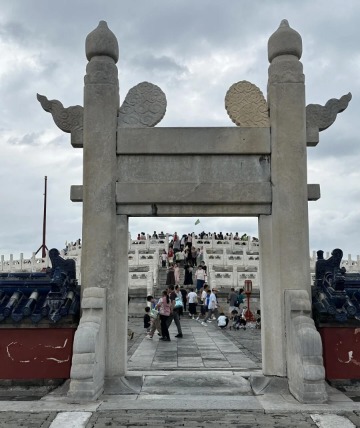
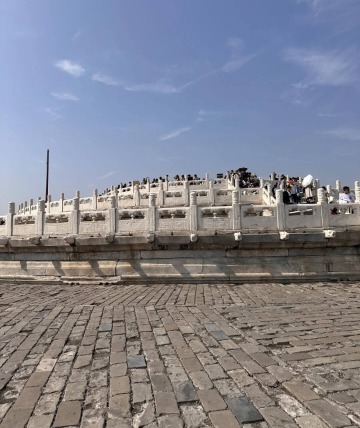
The Circular Mound Altar (圜丘)
The Circular Mound Altar is one of the main attractions at the Temple of Heaven China. It’s where the emperor performed the Heaven worship ceremony on the winter solstice according to the Chinese lunar calendar. Unlike other rituals that prayed for good harvests, this ceremony was purely about honoring and praising Heaven. During the grand ritual, the emperor would stand on the central stone slab and recite prayers to Heaven.
The design of the altar reflects the ancient Chinese view of the world. They believed the world consisted of both sky and earth, with the sky being round and the earth being square. So, the altar built for worshiping the sky was constructed in a circular shape, while the surrounding walls were square.
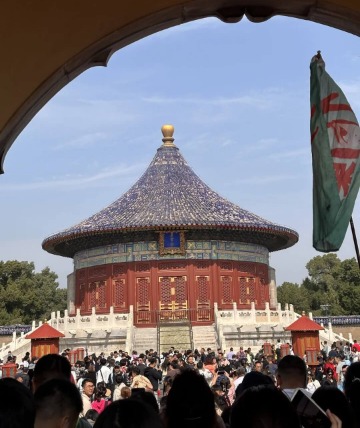
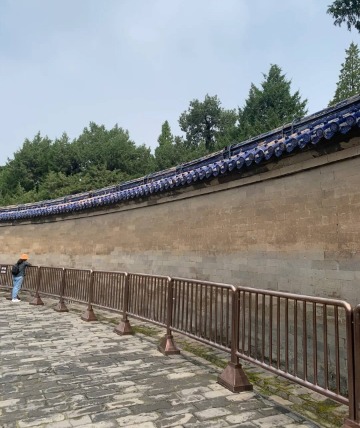
The Imperial Vault of Heaven (皇穹宇)
The Imperial Vault of Heaven is located next to the Circular Mound Altar. It was primarily used to house the tablets of the immortals, including those of the first eight emperors of the Qing Dynasty, the Sun Immortal, the Moon Immortal, and other celestial immortals.
The Imperial Vault is surrounded by a circular wall called the “Echo Wall,” which is a popular spot at the Temple of Heaven Beijing. The wall is very smooth, and its round design helps gather sound, causing it to bounce off the surface and create an echo. Visitors love to test it out to see if it really works. If you’re curious, feel free to give it a try and shout a few words—it’s kind of fun!
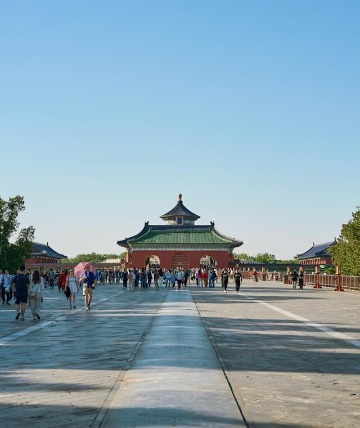
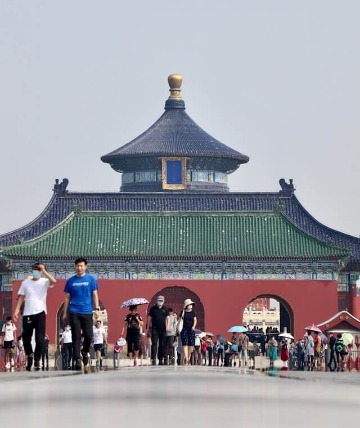
The Danbi Bridge (丹陛桥)
The Danbi Bridge connects the Circular Mound Altar to the Hall of Prayer for Good Harvests. The path here gradually rises, with a slight incline from the Circular Mound Altar to the Hall of Prayer for Good Harvests. Because of this, the Danbi Bridge is often referred to as the road from the human world to Heaven.
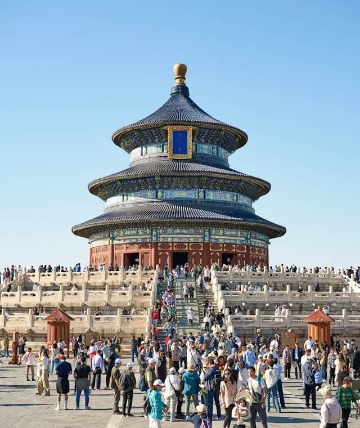
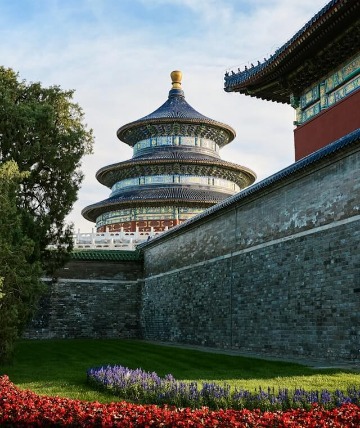
The Hall of Prayer for Good Harvests (祈年殿)
The Hall of Prayer for Good Harvests is undoubtedly the most iconic and popular building at the Temple of Heaven. If the Circular Mound Altar was used for winter rituals, the Hall of Prayer for Good Harvests was the site for spring ceremonies. Every spring, the emperor would pray on behalf of the entire nation, asking Heaven for a bountiful harvest and hoping for the country to be free from disasters like floods or droughts.
You’ll notice the roof of the Hall of Prayer for Good Harvests is also circular, reflecting the ancient Chinese belief that the sky is round. The tiles are blue, symbolizing the sky.
During the ceremony, the emperor would offer sacrifices, including livestock, grains, and fruits. He would recite a prayer that he had personally written, then hold incense and candles, offering them to Heaven. He would bow three times deeply as a sign of respect and devotion. Throughout the ceremony, the entire area would be filled with the fragrance of incense.

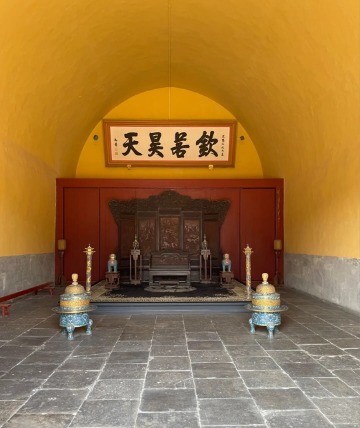
The Imperial Vault of Abstinence (斋宫)
Before performing the rituals at the Beijing Tiantan Temple of Heaven, the emperor would spend three days in fasting and purification to show his devotion and calm his mind. This process took place at the Imperial Vault of Abstinence. In Chinese, the term “斋戒” (zhāi jiè) means fasting and abstinence. “斋” refers to cleanliness and purification, meaning the emperor would bathe, change into clean clothes, avoid eating meat, and refrain from drinking alcohol. “戒” means abstaining from entertainment, like not listening to music or sleeping with his wife, to focus entirely on the solemnity of the ritual.
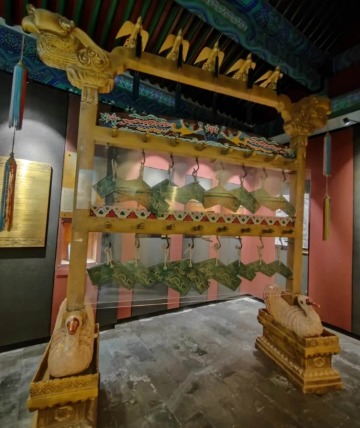
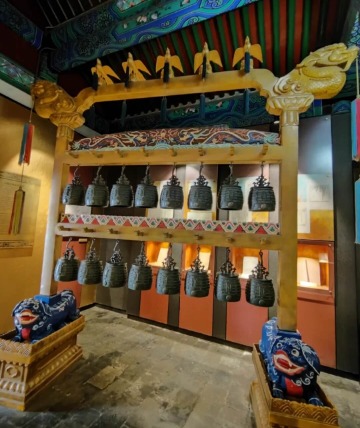
The Hall of Music (神乐署)
During the rituals at the Temple of Heaven, there would often be grand music performances, and the Hall of Music was responsible for managing the instruments and training the musicians. Traditional Chinese instruments are very different from Western ones, and some are so large that it takes several people to play them together.
In ancient Chinese court music, there were two main types: “Ya Yue” (雅乐) and “Yan Yue” (燕乐). “Ya Yue” was used for solemn occasions like rituals and ceremonies to reflect the emperor’s supreme authority. It was formal and dignified. “Yan Yue,” on the other hand, was for royal feasts and entertainment, often based on folk or foreign music, and was much more lively. For ordinary people, opportunities to hear music were rare.
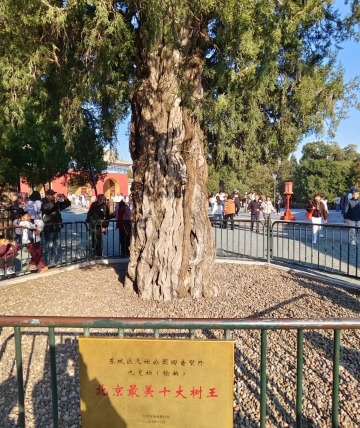
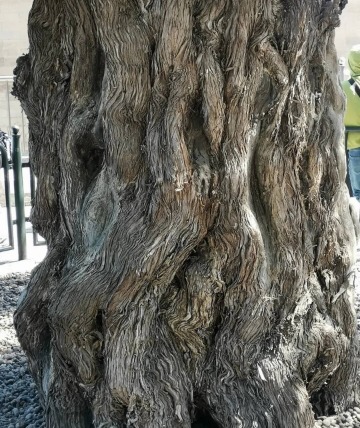
The Nine-Dragon Cypress (九龙柏)
There are a total of 3,562 cypress trees at the Temple of Heaven China, most of which were planted during the Ming Dynasty, over 600 years ago. Some of the oldest trees are more than 800 years old. Among them, the most famous is the “Nine-Dragon Cypress,” which is considered one of the “Top Ten Most Beautiful Trees in Beijing.” Its name comes from the twisted bark on the trunk, which spirals down in a way that looks like nine giant dragons winding around it.
Why did ancient Chinese people love cypress trees so much? They believed that cypress trees symbolized longevity and good fortune. Cypress trees are known for their long lifespan, sometimes lasting for thousands of years. They were often planted near tombs or ancestral halls, where they were thought to protect the souls of the deceased.
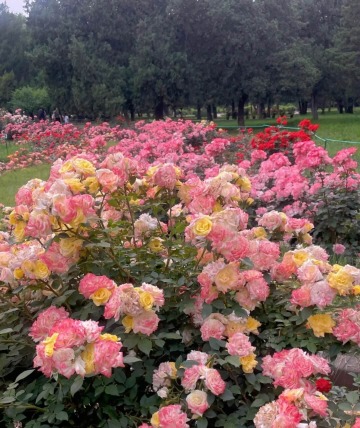
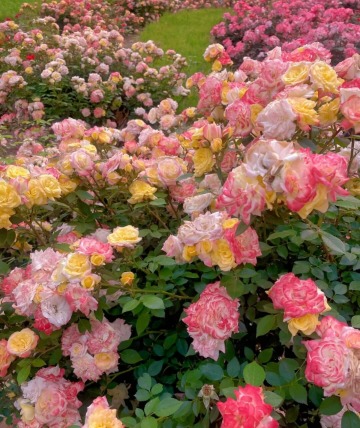
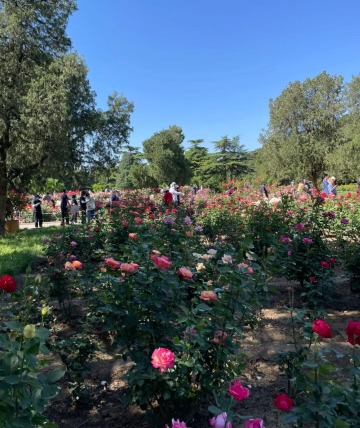
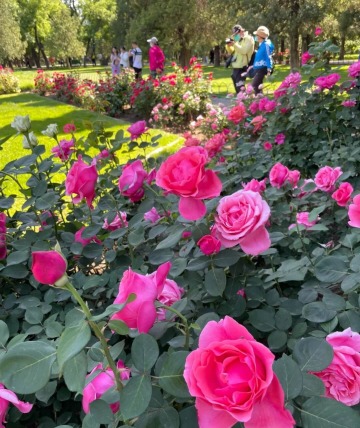
The China Rose Garden (月季园)
The China Rose Garden at the Temple of Heaven China is the largest open-air rose garden in northern China. Established in 1963, it was the first specialty rose garden in China. The garden features over 300 varieties of China roses, with more than 8,000 plants in total. The best time to visit is every May when the roses are in full bloom.
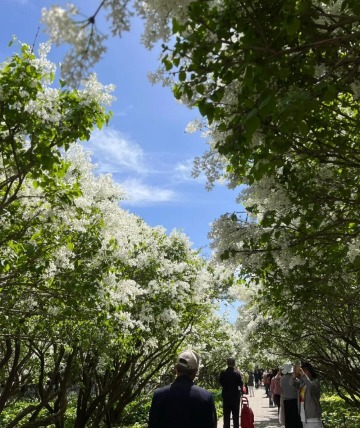
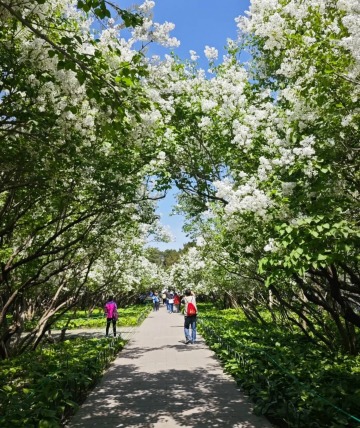
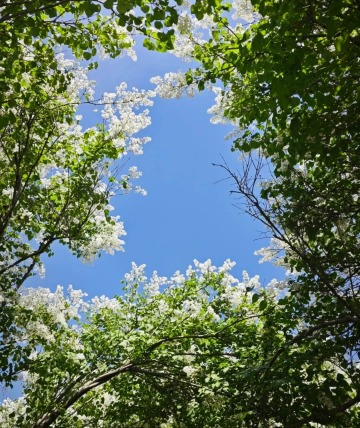
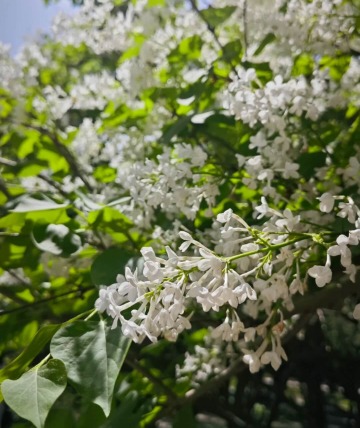
The Lilac Garden (丁香园)
The Lilac Garden in the Tiantan Temple of Heaven Park is the largest lilac grove in Beijing, home to several dozen lilac trees that are nearly 50 years old. When the lilacs bloom, the scene is like something out of a fairy tale. The peak blooming period is from April to May.
Activities at the Heaven Temple in Beijing
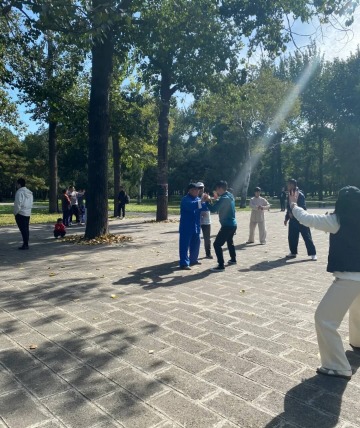
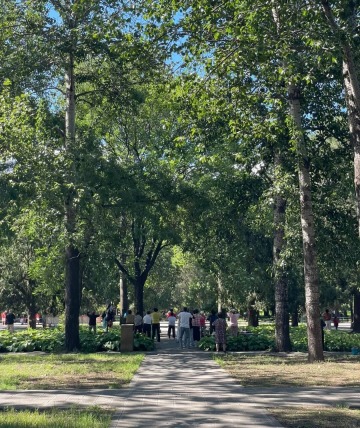
Chinese Martial Arts (中国武术)
At the Temple of Heaven Park, martial arts enthusiasts practice various forms of Chinese martial arts, including Tai Chi, staff techniques, swordplay, and more. From April to November each year, the park offers martial arts classes for international visitors. Martial arts instructors teach techniques such as Ba Duan Jin (Eight Pieces of Brocade), Tai Chi, and Tai Chi Sword to tourists from countries like Japan, the UK, the Netherlands, the US, and Australia.
If you’re interested in Chinese martial arts while touring Beijing, there’s no need to look for a martial arts school. You can simply visit the Temple of Heaven. If you see a style you like, just approach an instructor, and they’ll be happy to teach you.
Tai Chi is a graceful and slow-moving martial art suitable for people of all ages. It’s not only widely practiced in China but has also crossed borders, becoming a popular fitness activity around the world. In 2020, Tai Chi was added to the UNESCO Intangible Cultural Heritage list. Why not start learning this most popular form of martial art?
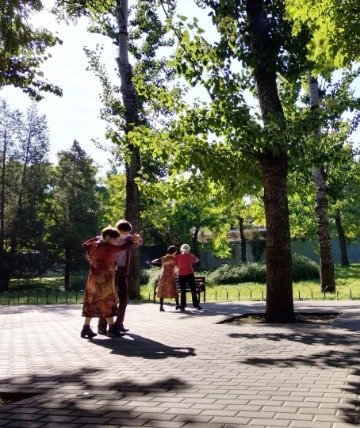
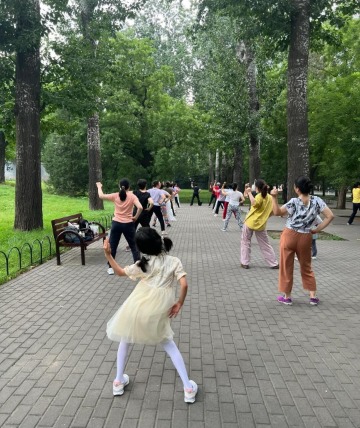
Square Dancing (广场舞)
For Beijingers, the Temple of the Heaven is more than just a tourist attraction—it’s an important part of daily life. At the west gate of the Temple of Heaven, you’ll often find many locals dancing, almost every day. The types of dances are diverse, including dances from Xinjiang, Guozhuang (a traditional Tibetan group dance), and more. Guozhuang is a popular folk dance among the elderly. They dance to the music with great focus, enjoying both the art and the exercise.
In addition, you’ll also see other types of square dancing, like disco and roller dancing. If you’re there in person, you’ll definitely be energized by their enthusiasm and vitality!
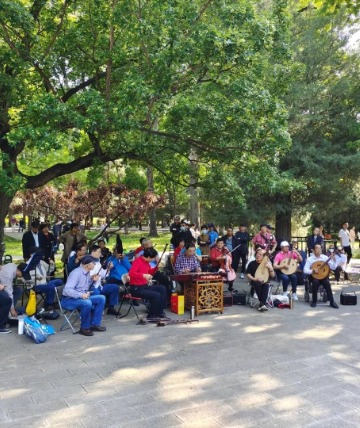

Instrument Performances (乐器表演)
In addition to square dancing, as you stroll through the Temple of Heaven, you’ll occasionally hear the sound of music. These are local retirees who have formed their own folk bands, practicing and performing in the park. Their performances are lighthearted and cheerful, and they are very popular with the locals.
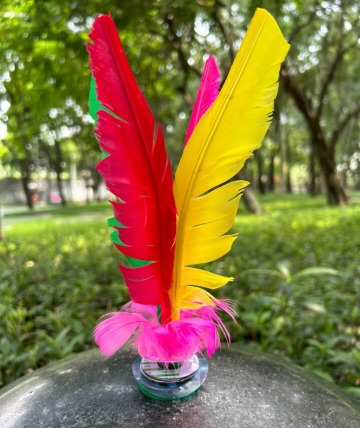
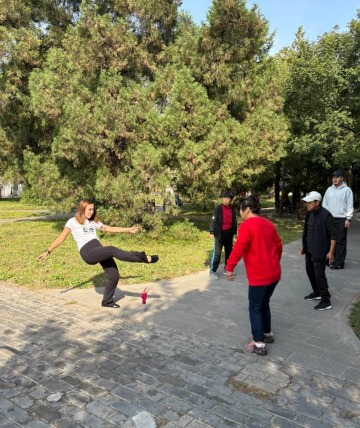
Jianzi (Kick the Shuttlecock) (踢毽子)
The fitness area near the East Gate of the Chinese Temple of Heaven Park is the main spot for playing Jianzi, a popular game where players kick a weighted shuttlecock back and forth using their feet. This activity is not just for locals—it attracts many foreign tourists and athletes as well. Some foreign athletes, who are in Beijing for competitions, often come to the park to try their hand at Jianzi during their training or downtime.
Jianzi originated during the Han Dynasty (202 BC – 220 AD) and has since become a widely enjoyed fitness and recreational activity. The beauty of Jianzi is its inclusiveness. When you pass by a group of people playing, if you feel like joining in, all you have to do is get close, and they’ll happily pass the shuttlecock to you. No need for introductions—you’re welcome to join in right away!
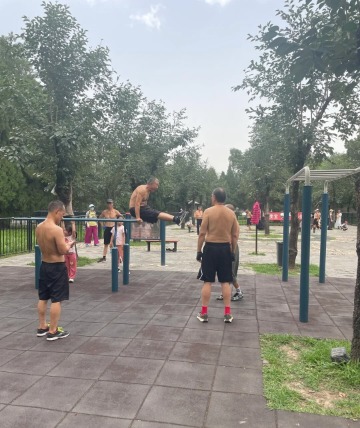
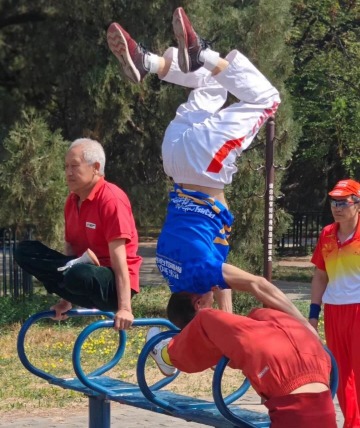
Fitness Enthusiasts (健身)
If you’re a fitness enthusiast, you definitely need to check out the fitness scene at the Heaven of Temple. Every morning, a group of elderly locals, most of whom are over 60, gather in the park to perform a variety of impressive exercises. They do everything from pull-ups and handstands to splits on the parallel bars and big swings. Their incredible skills and dedication have gone viral on Chinese social media, impressing people all over the country!
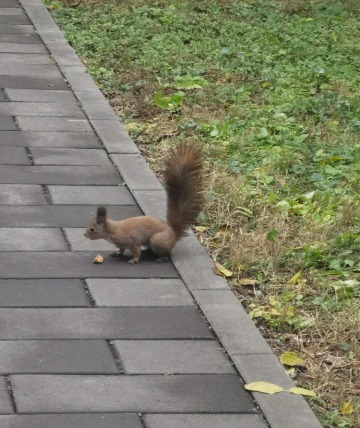

Feeding the Animals (喂食小动物)
I could even call the Temple of Heaven a “zoo” of sorts, as it’s home to various species of squirrels, including the red-bellied squirrel and the magic squirrel. There are also many rare bird species, such as the red-throated flycatcher, the spotted ground-thrush, and the brown-bellied and green-backed flycatchers.
The little squirrels here have become quite friendly with the visitors. If you tap a pinecone on the ground while passing by, they’ll scamper over to ask for a snack. They’re absolutely adorable!
FAQs About the Temple of Heaven
1. When was the Temple of Heaven built?
The Temple of Heaven was completed in 1420, during the Ming Dynasty, and is located in the Dongcheng District of Beijing.
2. Who built the Temple of Heaven?
The Temple of Heaven was ordered to be built by Emperor Zhu Di, the third emperor of the Ming Dynasty.
While the primary purpose of the Temple was to conduct heavenly sacrifices, there was also a more mysterious reason behind its construction. Zhu Di wanted to hold grand ceremonies at the Temple to proclaim to the nation that he was the “Son of Heaven” chosen by Heaven, thus asserting his legitimacy and demanding the submission of his subjects.
Why did he feel the need to do this? Because Zhu Di wasn’t originally emperor—he was the uncle of the second Ming emperor, Zhu Yunwen. After leading a rebellion to overthrow Zhu Yunwen, Zhu Di took the throne. His rise to power was seen by many as illegitimate, so he used his connection to Heaven to reinforce his authority and legitimize his rule.
3. How big is the Temple of Heaven?
The Temple of Heaven covers an area of 674.14 acres, which is about the size of 384 standard football fields. It’s 3.79 times larger than the Forbidden City. So, if you’re visiting the Temple of Heaven, be prepared to walk a lot! It’s a good idea to wear comfortable, sporty shoes.
How to Get to the Temple of Heaven
East Gate Route: Take Line 5 of the subway and get off at the Temple of Heaven East Gate Station (Tian Tan Dong Men), Exit A. From there, it’s just a short walk to the East Gate of the Beijing Tiantan.
West Gate Route: If you prefer to enter from the West Gate, take Line 8 of the subway and get off at Tianqiao Station (天桥), Exit C. Then, walk to the West Gate of the Beijing Tiantan.
Hours & Fees
Hours
Peak Season (April 1 to October 31): 6:00 AM to 10:00 PM, with entry closing at 9:00 PM.
Off-Season (November 1 to March 31): 8:00 AM to 5:30 PM, with entry closing at 4:30 PM.
Time Required
3-4 hours.
Fees
Regular Ticket: 15 CNY (approx. 2 USD) per person.
Combined Ticket: 34 CNY (approx. 5 USD) per person (includes access to the buildings within the Temple of Heaven).
Practical Tips
I recommend entering through the East Gate. Start by visiting the Hall of Prayer for Good Harvests, then move on to the Imperial Vault of Heaven, Echo Wall, and finally the Circular Mound Altar. You can exit through the South Gate. This route covers all the main sights of the Temple of Heaven, saving both time and energy.
On Fridays, Saturdays, and during major holidays, the Hall of Prayer for Good Harvests will be lit up, with lights turning on when the city’s streetlights are switched on.
Be sure to purchase the combined ticket to access the Hall of Prayer for Good Harvests, Imperial Vault of Heaven, Circular Mound Altar, and the Echo Wall.

